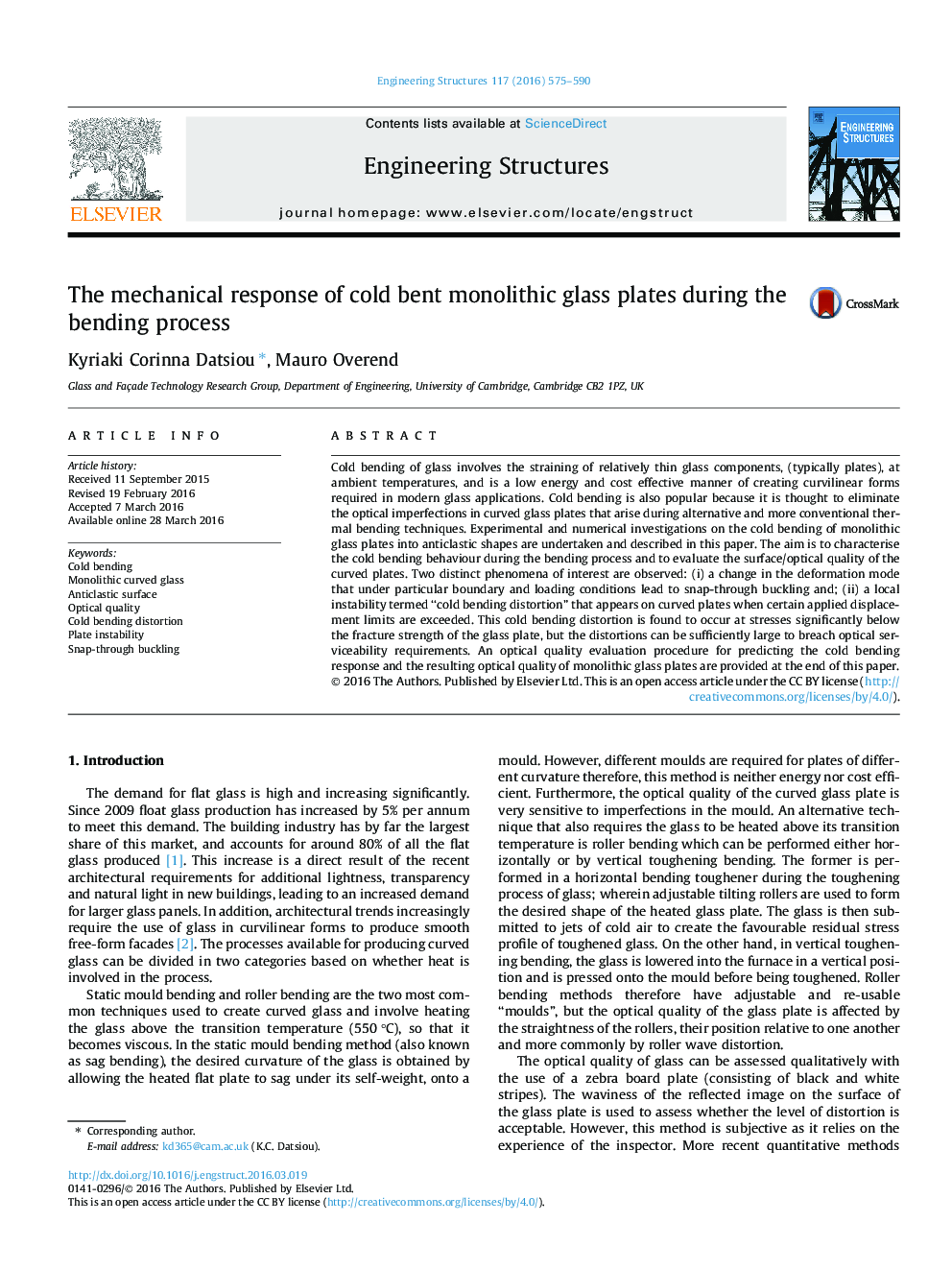| Article ID | Journal | Published Year | Pages | File Type |
|---|---|---|---|---|
| 6740089 | Engineering Structures | 2016 | 16 Pages |
Abstract
Cold bending of glass involves the straining of relatively thin glass components, (typically plates), at ambient temperatures, and is a low energy and cost effective manner of creating curvilinear forms required in modern glass applications. Cold bending is also popular because it is thought to eliminate the optical imperfections in curved glass plates that arise during alternative and more conventional thermal bending techniques. Experimental and numerical investigations on the cold bending of monolithic glass plates into anticlastic shapes are undertaken and described in this paper. The aim is to characterise the cold bending behaviour during the bending process and to evaluate the surface/optical quality of the curved plates. Two distinct phenomena of interest are observed: (i) a change in the deformation mode that under particular boundary and loading conditions lead to snap-through buckling and; (ii) a local instability termed “cold bending distortion” that appears on curved plates when certain applied displacement limits are exceeded. This cold bending distortion is found to occur at stresses significantly below the fracture strength of the glass plate, but the distortions can be sufficiently large to breach optical serviceability requirements. An optical quality evaluation procedure for predicting the cold bending response and the resulting optical quality of monolithic glass plates are provided at the end of this paper.
Related Topics
Physical Sciences and Engineering
Earth and Planetary Sciences
Geotechnical Engineering and Engineering Geology
Authors
Kyriaki Corinna Datsiou, Mauro Overend,
